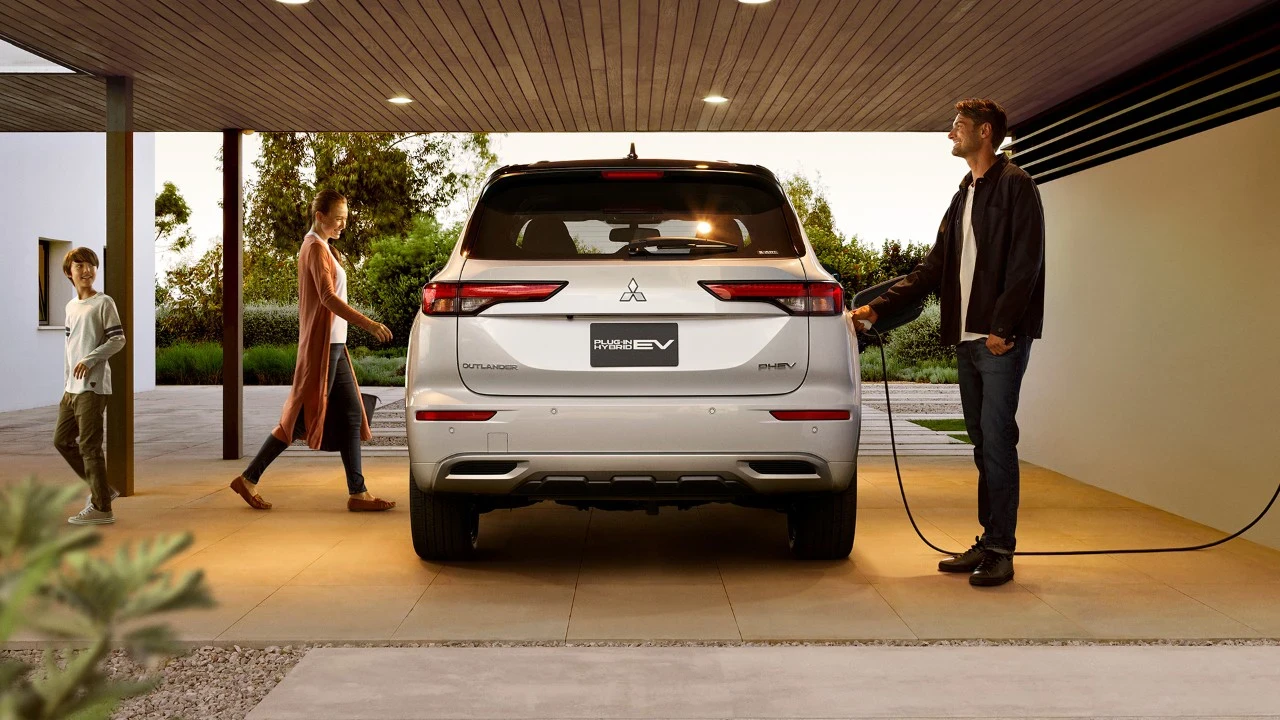Business Fleet vs. Public EV Charging: Which is Better?⚡NSW
Posted 3 Mar
Posted 3 Mar
As Australia continues to achieve its NetZero goals, electric vehicle adoption rises rapidly as Australians take advantage of cheaper transportation. Homes and businesses alike considering switching to electric cars, but what is the best way to charge them? Should businesses install their own fleet chargers or rely on public chargers?
To determine if a fleet EV charging solution is right for you, or whether you should rely on already available public charging, there are a few elements to consider. Things like how many vehicles you have, required charging speeds and durations, accessibility, budget, and availability will contribute to finding what is the right EV charging solution for your business.

Matt Connor on Pexels.
A fleet charging arrangement can range from an individual to multiple chargers, to standard, fast-charging, and ultra-fast charging on a commercial premises. These are typically designed to keep the fleet of business-owned electric vehicles charged.
Another option for businesses, is the less common strategy of installing home EV chargers for employees to allow for convenient charging right at home 24/7. This not only confirms availability but can also be cheaper than public charging with off-peak and solar charging.
A public charging station, whether it be one or many chargers, is a station that is accessible to the public to charge their electric vehicles. This can range in price to use and can achieve your basic fleet charging needs depending on your setup.
| |
Fleet Charging |
Home Fleet Charging |
Public Charging |
| Initial Costs |
Higher investment into chargers and electrical infrastructure. |
Lower initial cost for simpler installations for suitable homes. |
No initial cost involved. |
| Charging Costs |
Cost of charging is more predictable and generally cheaper, especially with solar. |
Reduced charging costs when charging off-peak or with solar. |
Higher costs, particularly fast and ultra-fast charging. |
| Accessibility |
Limited to business locations. But is also more readily available. |
Convenient for employees with home charging for suitable homes. |
Broader accessibility with a larger charging network, but more limited availability. |
| Maintenance |
Requires ongoing charger and electrical maintenance. |
Minimal maintenance required. |
No maintenance required as the provider is responsible. |
| Sustainability |
Can be integrated with solar for renewable charging. |
Can take advantage of solar charging, providing the home has solar. |
Reliant on a mix of energy sources, sometimes renewable. |
| Features |
Offers flexible charging options for various speeds and quantities. Scalable for future growth. Can provide insight into charging and energy consumption. Charge off solar energy to further reduce operational costs. |
Convenient charging with various charger options available. Can also be powered by solar to help reduce refuelling costs. |
Strong network of available charging. Offers charging speeds up to ultra-fast charging. |
| Convenience |
Convenient for employees to charge EVs whilst at work. |
Very convenient, charging right from home. |
Less convenient, especially for high traffic charging stations with higher wait times. |
| Monitoring |
Great fleet management to ensure accurate and accessible monitoring and cost insights. |
Limited monitoring capabilities from a business standpoint. |
Limited monitoring and tracking capabilities to track charging rates and costs. |
With the basics in mind, what charging strategy should your business choose? Each business will vary in elements like budget and requirements, but here are some pointers on why you should choose each certain charging option.
One of the great things about fleet EV charging is the ability to pick from a range of charger speeds and types to better suit your property’s charging requirements. By investing in business-owned fleet charging, you enable ultimate control over availability, accessibility, scheduling, sustainability, and efficiency.
For energy-aware businesses, being able to keep all business-related electric vehicles topped up with solar and off-peak electricity is perfect for convenience and cost savings compared to traditional transportation.
|
Positives |
Negatives |
|
24/7 Accessibility |
More expensive to install your own chargers |

Dean Fugate on Pexels.

Elite Power Group Zappi Installation in NSW.
Choosing public charging is a cheaper short-term alternative, as it eliminates the initial investment of installing on-site fleet EV
chargers which can be expensive to install (depending on the requirements). Whilst this reduces your accessibility, as public chargers can
be busy depending on the location, most public charging stations are high-powered DC fast chargers that can charge your EV pretty
quickly.
|
Positives |
Negatives |
|
No installation costs Wide charger accessibility with a large network No maintenance |
More expensive to charge your EVs Limited or No fleet management and cost tracking Longer wait times |
Whilst depending fully on public chargers can work for some businesses, having a reliable and accessible home charger installed for your employees can be a great idea, especially if they are at home overnight.
The cost of installing residential chargers is generally less than the cost of commercial DC fast charger installations on commercial properties and also increases accessibility and convenience for your employees charging right at home.
|
Positives |
Negatives |
|
Ultimate Convenience and Flexibility |
Harder to track reimbursement and billing |

Vitali Adutskevich on Pexels.
Electric vehicles serve as an opportunity for businesses to save on operational costs in everyday life. Electric vehicles themselves are cheaper to run and maintain than their petrol predecessors, and is likely to save NSW fleet drivers around $3,100 per year on average by switching to an EV according to the NSW Government.
Combine your electric vehicle savings, charging these vehicles yourself allows you to maximise your energy and independence. Imaging having your own controlled fuel station in your parking lot. Businesses who also invest in solar can charge their electric vehicles with free electricity and offset charging costs, further increasing savings.
The NSW Government is helping fund businesses in fast-tracking their transition to electric vehicle fleets. From the 12th November 2024 to 10th June 2025, the Federal Government is allowing for an increased kick-start funding of $13 million for up to 15 EVs and optional smart chargers.
Similar to fleet EV charging solutions, businesses can achieve in-house electric fleet charging, however, the charger is also open to the public for accessible charging. Using reputable commercial chargers like Ocular, businesses can set fees and provide a hassle-free revenue stream for the ultimate investment, and gain the ability to join a network of public chargers which can attract potential customers.
This would be an ideal option for cafés as the charging would generation additional income but also encourage the EV owner to get a coffee whilst they wait for their EV to charge.

Kindel Media on Pexels.

Elite Power Group Commercial Solar Installation
Businesses with solar panels can greatly benefit from cheap electric vehicle charging by offsetting energy usage using renewable energy. When office and other buildings produce more than they consume in daily usage, a lot of solar energy is fed back into the grid for cheap. With solar EV charging, these electric vehicles can act like as a sponge absorbing all that solar goodness.
The NSW Government have announced funding for businesses that are interested in investigating a few electric vehicles or smaller fleets with eligibility expanding to up to 15 EVs (and optional smart chargers) and individual truck operators.
This fixed incentive amount per vehicle is valid from now to the 10th June 2025, and acts as a ‘first come, first served’ basis.
The incentive is eligible for new passenger vehicles (PVs) and sports utility vehicles (SUVs) with a price cap of $89,332, light commercial vehicles (LCVs) up to 4.5 tonnes, and light duty trucks up to 4.5 tonnes.
In addition to funding electric vehicle fleets, the NSW Government is also incentivising smart charging equipment at their organisation premises or at their employees’ homes. This includes one charging port per BEV, and a dual-port charger for 2 BEVs.
Fleet Managers must select chargers or software from the approved list which has been created by the NSW Government and Electric Vehicle Council.
For successful participants of the kick-start funding, Fleet Managers can get $1,200 subsidies for PV, SUV, and LCV (up to 4.5 tonnes) smart chargers per charging port, and $3,000 for light trucks (up to 4.5 tonnes).

Vladimir Srajber on Pexels.
Electric vehicle charging, whether it be for public access or designed to power your fleet, can be a strong tool in reducing business expenses and improving sustainability and branding.
We specialise in fleet electric vehicle charging across the Newcastle, Maitland, and Hunter region, providing businesses with expert
consultation, design, and installation of all types of electric vehicle charging infrastructure and charging solutions.
Government
Fleet EV Charging Incentive
Electric Vehicle Grant – Round 3

Should solar owners get a home battery (ESS) or wait for vehicle-to-home (V2H) technology to use electric vehicle battery power to be available in Australia?

Discover available rooftop solar PV rebates, loans, and incentives in Newcastle, Maitland, and the Hunter, NSW and explore eligibility and how to apply.
Leave a Comment